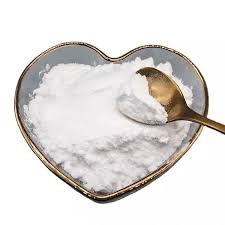
- +86-13363869198
- weimiaohb@126.com

Aug . 11, 2024 19:56 Back to list
Exploring the Antimicrobial Properties of Dermaseptin Cas 136212-91-4 for Potential Therapeutic Applications
Dermaseptin An Overview of Its Properties and Applications
Dermaseptin, a peptide derived from the skin secretions of amphibians such as the frog species Phyllomedusa, represents an intriguing area of study within the fields of biochemistry and pharmacology. With the chemical registry number CAS 136212-91-4, dermaseptin has garnered attention due to its antimicrobial properties and potential therapeutic applications. This article will discuss the structure, functions, and future prospects of dermaseptin.
Structural Characteristics
Dermaseptin is a cationic peptide consisting of a sequence of amino acids that contribute to its antimicrobial efficacy. The structure of dermaseptin typically includes a high proportion of basic amino acids, which enable the peptide to interact effectively with the negatively charged surfaces of microbial membranes. This interaction leads to the disruption of bacterial membranes, causing cell lysis and ultimately, antimicrobial activity. The amphipathic nature of dermaseptin also allows it to form pores in bacterial membranes, further enhancing its lethal effects on a variety of pathogens, including both Gram-positive and Gram-negative bacteria.
Antimicrobial Activity
The primary function of dermaseptin is its role as an antimicrobial agent. Research has demonstrated that dermaseptin exhibits broad-spectrum activity against a range of microorganisms, including bacteria, fungi, and certain viruses. The peptide has shown noteworthy effectiveness against pathogenic strains such as Staphylococcus aureus and Escherichia coli. The ability to combat antibiotic-resistant strains of bacteria is particularly significant in the context of the global rise in antimicrobial resistance, making dermaseptin a potential candidate for the development of new therapeutic agents.
Beyond bacteria, dermaseptin also displays antifungal properties, demonstrating efficacy against species such as Candida albicans. This dual activity broadens its potential application in treating various infections, particularly in an era where infections caused by both bacteria and fungi are increasingly challenging to manage.
dermaseptin cas 136212-91-4

Therapeutic Applications
The exploration of dermaseptin goes beyond its basic antimicrobial properties; researchers are investigating its potential applications in various fields. As a natural antimicrobial peptide, it holds promise for use in pharmaceuticals, particularly in the development of new classes of antibiotics. Additionally, dermaseptin could be incorporated into topical formulations for wound healing, given its ability to prevent infections in open wounds.
Dermaseptin’s potential also extends into the veterinary field, where it may be utilized to treat infections in livestock and pets. The application of antimicrobial peptides like dermaseptin in agriculture could offer an alternative to traditional antibiotics, helping to combat antibiotic resistance while promoting animal health.
Future Directions
Despite its promising qualities, the full therapeutic potential of dermaseptin is yet to be realized. Ongoing research aims to enhance its stability and bioavailability—factors that could influence its effectiveness as a drug. Advances in formulation technology and drug delivery systems may enable clinicians to harness dermaseptin’s benefits more effectively.
Furthermore, studies investigating the mechanisms of action of dermaseptin at the molecular level will deepen our understanding of how it can be tailored for specific therapeutic applications. Innovations in genetic engineering and peptide synthesis may allow for the development of dermaseptin analogs with optimized properties for enhanced efficacy.
In conclusion, dermaseptin is a multifaceted antimicrobial peptide with significant potential in treating various infections. Its unique properties, derived from nature, position it as a promising candidate in the battle against antibiotic resistance. As research progresses, dermaseptin may play a crucial role in the future of antimicrobial therapy, paving the way for new and effective treatments.
-
GS-441524 White Liquid Production for Factories | AI-Optimized
NewsAug.02,2025
-
AI-Optimized CAS: 79099-07-3 Factories for High Yield
NewsAug.01,2025
-
Premium CAS 1451-83-8 Factory with GPT-4 Turbo | AI-Optimized
NewsJul.31,2025
-
Pharmaceutical Intermediates - AI-Optimized Synthesis & Purity
NewsJul.31,2025
-
Top CAS: 79099-07-3 Factories & Wholesale Supplier from China
NewsJul.30,2025
-
High-Quality GS-441524 for White Liquid Type Factories & Suppliers
NewsJul.29,2025